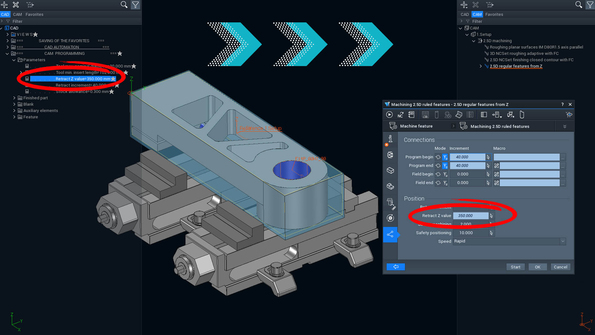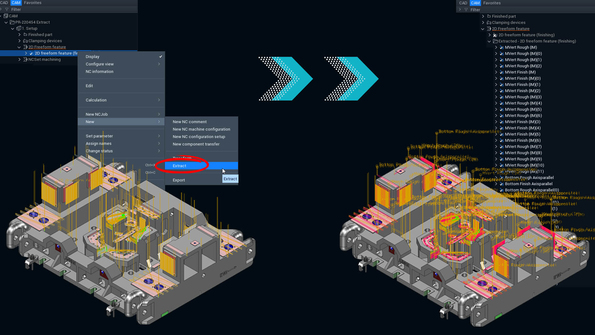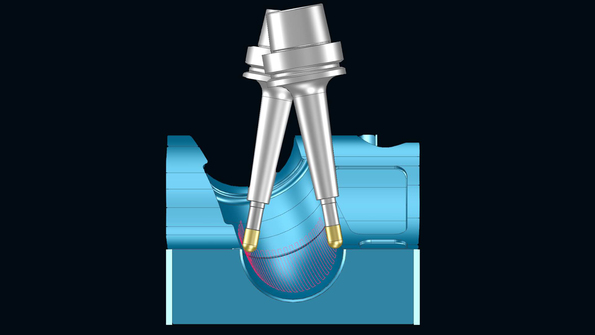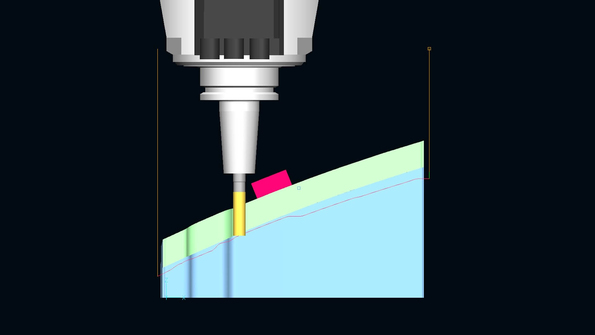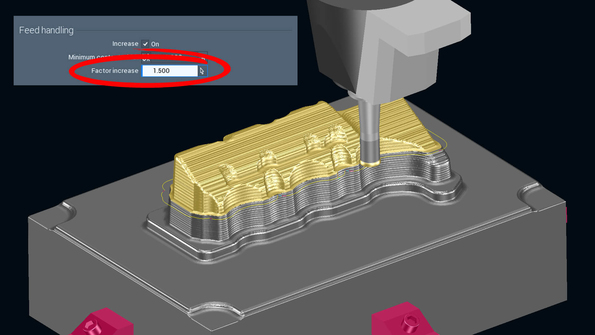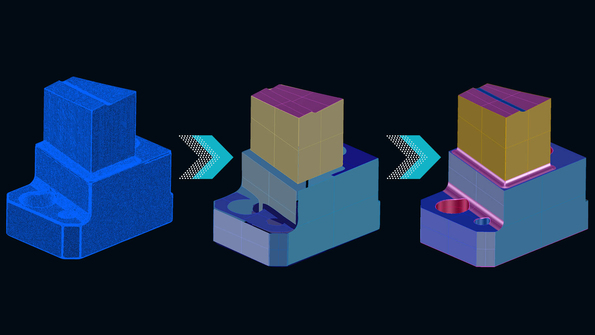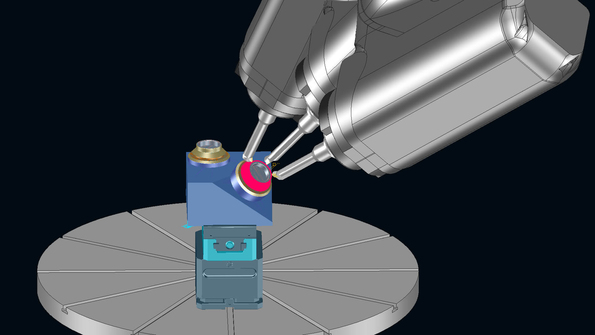Tebis launches Version 4.1 Release 8
The CAD/CAM software for a competitive advantage: Flexibility meets automation
Martinsried, Germany, June 11, 2024 – End-to-end automated processes are more important than ever in the manufacturing industry. Tebis Version 4.1 Release 8 offers enhanced flexibility in automation like never before. Companies can respond more quickly and adapt to any request, allowing for them to maintain portfolio that offers a significant competitive advantage. Parts of all complexity levels can be manufactured more efficiently and safely, while achieving superior surface quality.
A standout feature is the introduction of interpolation turning, enabling easy and cost-effective production of rotationally symmetrical areas on many milling machines. Tebis is also the only CAD/CAM system that offers 6-sided simultaneous interpolation turning.
The next step toward combined CAD/CAM technology with CAD parametric design
The new ability to link CAD object parameters directly with CAM parameters is a special feature of Release 8. These can include numerically defined geometric properties like length and height. Many Tebis customers also define individual formula-based "control parameters" to simplify design and data preparation. These results can be transferred right to the CAM world.
Here are two simple examples of combined technology: The electrode spark gap corresponds to either the negative milling element stock allowance or the wall thickness; the sum of the part’s height and safety clearance provides the Z retract distance.
This again shows how close the Tebis parametric solution is to the real manufacturing world: In many parametric systems, the CAM programming is updated after each change to the CAD model with no option for intervention. But Tebis is different: The user independently specifies the changes that should result in a recalculation of the toolpath and those that shouldn’t.
Quickly adapt to changes in the production environment when machining features
Tebis effectively automates the machining of 2.5D free-form features, as well as 2.5D and 3D geometries, and allows these processes to be combined in machining sequences using templates. These machining sequences can now be broken down into individual NCJobs with a single click. Jobs can be added or modified and processing sequences can be changed.
Precisely control machine axes in multi-axis simultaneous milling
Movements of the pivot and rotation axes can now be precisely controlled in multi-axis simultaneous machining in both the milling and stepover directions with no additional design effort. For example, one axis can be clamped and the movement of the second axis can be interpolated between specified angles. This results in very homogeneous machine movements and therefore outstanding surface quality.
Tebis customers always benefit from the software’s full scope of functions: "If one of our customers purchases the 5-axis simultaneous milling solution, they receive the full package. Many of our competitors require that such functions be purchased separately," emphasizes Tebis Product Manager Zdenek Knopp.
2.5D contour machining: Automatic avoidance in the Z direction
In 2.5D contour machining, the milling paths can now automatically shift in the axial direction for better collision avoidance. This low tool-wear approach saves a lot of time: The maximum insert length of the tool is optimally deployed; the maximum amount of material is removed in just a single cut with no retract movements. The CAM user retains flexibility and can intervene interactively if needed: The user decides whether to include the tool holder in the collision analysis and can set individual allowances for the shank, holder and machine head as required.
Shorter machining time when roughing
The option to individually adjust the tool feed when roughing results in faster machining. The tool can be moved at a higher feed rate in sections along a milling path, depending on the tool’s contact and the material removal rate.
Automatically generate surfaces on meshes
Everyone who digitizes finished models to generate new surfaces from the mesh data finds the right solution with Tebis. Release 8 has made reverse engineering even easier: Planar surfaces and free-form surfaces can now be automatically calculated on meshes with no need to design an area on the reference geometry. The result is highly precise approximation surfaces that can be linked together for subsequent processes, for example, and can then be further edited parametrically.
Time savings of up to 80 percent: Interpolation turning for fast manufacturing of symmetrical part areas on all machines with position-controlled spindles
With interpolation turning, Tebis supports a very new and highly efficient manufacturing method that’s becoming increasingly important: It enables turning on all machines that have a position-controlled spindle, including milling machines. This method is especially appropriate for parts with many milled elements and fewer turned elements. Time savings of up to 80 percent can be achieved with interpolation turning, because areas that previously had to be milled can now be turned. It also enables the use of simple turning tools that have a long tool life instead of high-cost ground milling tools. Because the cutter is in continuous contact in interpolation turning, very high surface qualities are achieved.
6-axis simultaneous interpolation turning as a unique selling point:
Tebis is the only system on the market that’s mastered the next developmental stage of interpolation turning – namely, 6-axis simultaneous interpolation turning.
"With 6-axis simultaneous interpolation turning, even undercut areas can be manufactured easily and efficiently in a single setup," says Jakub Dittmar, Product Manager at Tebis. "Because very short tools can be used in multi-axis turning and the spindle interpolates very smoothly, this machining type gives us an even better surface quality. It’s therefore the ideal technology when precision is foremost. We’ve already applied for a patent in Europe for this extremely promising and modern method.“
Tebis Version 4.1 Release 8 will be rolled out in June. The complete overview of the new features and extensions in Tebis 4.1 Release 8 is available here:
Enterprise customers have full access to Tebis' expertise when installing their system and throughout their ongoing work with Version 4.1. A modular training concept and training courses for special manufacturing processes allow Tebis users to take full advantage of the software to improve their business processes – and maintain their future viability. A dedicated support team is available to answer all user questions. The expertise of the Tebis Service team is also available, as are numerous application games and interactive opportunities for sharing ideas in the online community.


